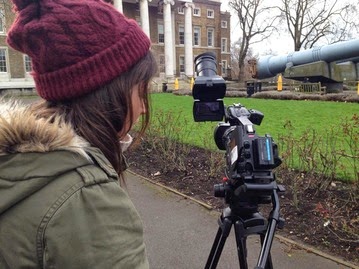 |
| flaglerlive.com |
Alliance of Women Film Journalists 2010
| Nominated EDA Special Mention Award | Movie You Wanted to Love, But Just Couldn't |
 |
| http://www.dvdbeaver.com |
Mainly I wanted to challenge the unnecessary inclusion of archive of 'The Simpsons', and 'School of Rock' that seemed to attempt to break up the endless narration that never actually arrived at a solid conclusion. Surely it's just a waste of money. Then I remembered Guggenheim made 'An Inconvenient Truth' and probably still has the money to spend on idle content. If the point was to highlight that bad education had become so much a part of the US education infrastructure that it was even embedded within popular culture, then ok, I get the link. But Guggenheim instead could have spent the time and money showing us real representations of the issues. I wanted to hear personal accounts, testimonies, not just watch yet another persons fictional interpretation of the system. Is that what the issue is, fictional?
 |
| http://www.dvdbeaver.com |
It just didn't move me to want to make a difference, nor did it make me feel as though there was a way I could help at all. Although Guggenheim's graphical finale supports that no big changes have ever started in the White House, they have started with people, started with you... I felt there was nothing willing me to support the cause, nothing compelling me to do so.
The film consisted of far too many accounts of failure, far too many interviews, far too much description and narration and nowhere near enough visual evidence. I read somewhere that a good documentary will have the power to persuade you of it's cause by images alone, and 'Waiting for Superman' just didn't. I felt, nothing.
 |
| Michelle Rhee - nytimes.com |
It may have taken us through some of the attempts to alter the US education system with some nice archive of Michelle Rhee in her battles against angry parents. But I had no real emotional attachment to any of our featured children that allowed me to really feel for them at their acceptance/rejections into better schools at the ever anticipated 'lottery'.
 |
| http://www.dvdbeaver.com |
The film wasn't completely elusive, it had some great graphical elements and held at least one memorable moment with young Anthony who is already planning for the future of his children as his own is still being decided. But I don't think that Guggenheim completely succeeded in humanising the statistics flooding out of the academic sinkholes of the US.
 |
| graphical elements - http://www.dvdbeaver.com |
Many say it's well made, others say it's an important documentary to watch, some say it compels change... I disagree. I think to compel an audience to act, they need to SEE real people's experiences, not just HEAR them. In this I don't think Guggenheim did as well as he could. It's a commentary, not a documentary. On the subject of commentary, for a film about children, I also wanted to hear a lot more from them than I did. For a film about education, I wanted to see a lot more REAL on-location footage in classrooms, like the shot of Anthony holding his hand up, rather than just that single token shot. That single shot, did not lay down a narrative of reality for me, the visuals were not enough to convince me. But that's just me. Who knows, you might think differently.
Waiting for Superman is available on Amazon for the modest UK price of £2.86 so why not decide for yourself! http://www.amazon.co.uk/Waiting-For-Superman-Davis-Guggenheim/dp/B004OBZLO6































